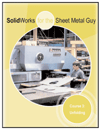Many types of buildings could benefit from duct sealing, according to a study from a Minneapolis-based environmental organization.
HVAC system type, operating pressure, design flow and structure tightness should be used to determine if a building can benefit from duct sealing, the study from Center for Energy and Environment said.
The findings were recently presented by Josh Quinnell, Ph.D., a senior research engineer at the center, during a webinar sponsored by Aeroseal, a manufacturer of aerosol-based duct sealing products.
“Duct leakage can result in a major hit on buildings’ energy use and cause a substantial increase in operating costs,” Quinnell said. “Our study identified key criteria to pinpoint those buildings that are most likely to experience leakage, and consequently benefit the most from duct sealing.”
The most critical criteria, according to the study:
- Exhaust systems in unconditioned spaces, supply air systems with ducted returns and those in ceiling plenum returns could benefit the most.
- Systems with operating pressure at least 0.05-inch water gauge could benefit, although levels above 1 inch are better.
- Design airflow above 4,000 cubic feet per minute could benefit but levels above 10,000 cfm are better.
- HVAC systems already sealed or considered “tight” because of spiral duct, flanges and gaskets are less likely to leak.
The study said aerosol-based duct sealing was more effective than using traditional mastics, especially if ductwork was insulated or access was limited.
“Using Aeroseal technology, the median sealing rate was 86 percent and often reduced effectively to zero -— among the highest energy conservation rates we’ve studied,” Quinnell said. “Our study predicts an average ROI (return on investment) of around seven years, achieved by first identifying the buildings best suited for sealing and then using the aerosol sealing process to do the work.”










